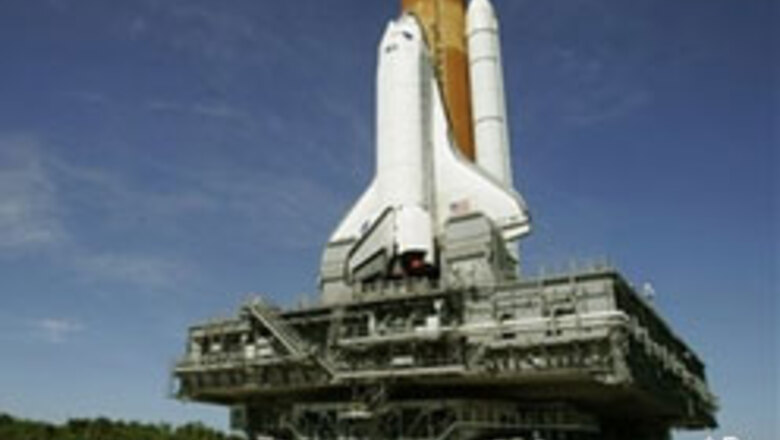
views
Cape Canaveral (Florida): Space shuttle Atlantis was removed from its seaside launch pad on Sunday for repairs after a freak hailstorm battered the spaceship's fuel tank last week.
The shuttle had been scheduled to lift off on March 15 for the first of five missions
NASA plans to fly to the International Space Station this year.
But a fierce thunderstorm directly over the Kennedy Space Center on Monday left the shuttle with a fuel tank too damaged to fly.
The storm dropped golf ball-sized hail on the shuttle -- there were about 7,000 strikes on the insulation on the fuel tank.
While most are expected to be minor, several hundred divots and gouges will need to be sanded down and filled with new foam, said shuttle tank manager John Chapman, with NASA's Marshall Space Flight Center in Huntsville, Alabama.
If the damage proves too severe, NASA also could decide to replace Atlantis' tank with one being prepared for the next shuttle mission, which had been targeted for late June.
Technicians plan to make detailed inspections and tests of the tank before managers decide whether to repair or replace it.
Repairing the gouges in the tank's insulating foam would likely position the shuttle for a launch in late April or early May, program manager Wayne Hale said at a briefing last week.
Replacing the tank however would bump Atlantis' mission to June because there are no spare tanks ready to fly at the Kennedy Space Center.
The next tank is due to arrive in April and will take two months to prepare for flight, Hale said.
NASA has been focused on fuel tank safety since the deadly 2003 Columbia accident. The shuttle was hit by a piece of the tank's foam that fell off during liftoff.
The insulation damaged Columbia's wing, which broke apart as the shuttle flew through the atmosphere 16 days later for landing. Seven astronauts were killed as the shuttle broke apart over Texas.
The 3.5-mile (5.6-km) trek from the shuttle's launch pad to a processing hangar was scheduled to take about seven hours.


















Comments
0 comment